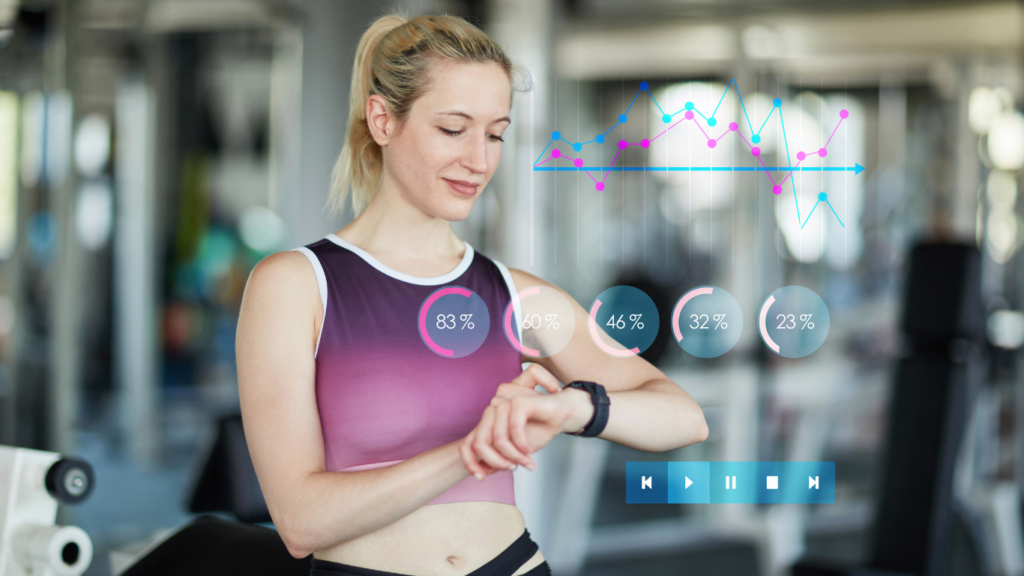Staying fit has always been a priority for me, but the way we approach training is evolving faster than ever. In 2025, fitness tech is taking center stage, transforming workouts into something smarter, more personalized, and incredibly efficient. From AI-driven coaching to wearable devices that track every detail of our performance, the future of fitness is here, and it’s reshaping how we move.
The Evolution Of Fitness Technology
Fitness technology has advanced from basic pedometers to comprehensive ecosystems of integrated tools. Early devices tracked steps, but modern tech now provides real-time analytics, immersive experiences, and adaptive coaching. These innovations redefine how we approach personal fitness.
Artificial intelligence plays a central role, enhancing tracking, feedback, and personalization. Smartwatches like the Apple Watch Series 10 and advanced fitness trackers go beyond calorie counting, offering features like ECG monitoring and blood oxygen analysis. AI coaching platforms analyze performance data, creating dynamic workout plans tailored to specific goals and progress.
Virtual and augmented reality add immersive elements to fitness routines. Systems like Meta Quest 3 and HTC Vive XR Elite support virtual training environments, enabling users to participate in simulated workouts or interactive classes that feel real. By combining sensory engagement with exercise, these tools revolutionize motivation.
Connected fitness equipment integrates seamlessly with apps and platforms. Treadmills, stationary bikes, and rowers offer live classes and on-demand sessions through devices like Peloton Row and NordicTrack’s iFIT system. This interconnectivity streamlines workout experiences at home, removing the need for separate gym visits.
Biometric wearables like WHOOP and Oura Ring track recovery, stress, and sleep metrics. These devices empower individuals to optimize performance by providing actionable health insights. Monitoring these factors is as essential to fitness as the actual workouts, helping users balance training intensity with recovery.
The adaptability and precision of modern fitness tech transform exercise into an efficient, data-driven experience while making professional-level resources accessible to everyone.
Key Innovations In 2025 Fitness Tech
Fitness technology in 2025 offers groundbreaking innovations, redefining how individuals approach training and health monitoring. These advancements leverage wearable devices, virtual reality, and AI-driven solutions to create more efficient and personalized workout experiences.
Wearable Devices And Smart Trackers
- Wearable fitness devices in 2025 integrate advanced health metrics and real-time feedback.
- Devices like the Oura Ring 4 and WHOOP Strap 5.0 monitor recovery, heart rate variability, and stress levels, improving long-term performance tracking.
- Smart trackers now feature continuous glucose monitoring and hydration-level detection, helping users make informed nutritional and hydration decisions during exercise.
- These tools deliver professional-grade data accessibility for both athletes and general users.
Virtual Reality And Immersive Workouts
Virtual reality creates fully immersive workout environments, blending entertainment with fitness. Systems like Meta Fitness Pro 3 and HTC VIVE Fit deliver high-intensity interval training sessions or yoga classes in virtual landscapes, keeping users engaged. Augmented reality overlays, seen in solutions like AR Active Glasses, combine real-world workouts with digital guidance, such as posture corrections or exercise tips. These tools enhance user motivation and improve exercise adherence through interactive and gamified elements.
AI-Driven Personal Training
AI personal trainers analyze fitness levels, goals, and progress to create customized workout plans. Platforms incorporating AI, like SmartFit Coach and Fitgen Pro, adjust exercises dynamically based on real-time performance data. Features such as motion tracking and form analysis ensure better technique adherence and injury prevention. Machine learning algorithms also recommend recovery protocols by:
- analyzing sleep patterns
- stress levels
- prior workout data
enhancing overall fitness personalization.
How 2025 Fitness Tech Enhances Training

Fitness technology in 2025 reshapes training approaches, delivering precision, personalization, and efficiency. Advanced integrations allow users to maximize performance and recovery with tools tailored to individual needs.
Personalized Training Plans
AI-powered platforms generate custom workout plans based on user data. For example, SmartFit Coach analyzes fitness levels, movement patterns, and goals to create dynamic programs. These systems adapt over time, ensuring consistent progress and reducing plateaus. Integrating insights from wearables like the WHOOP Strap 5.0 or Oura Ring 4 further enhances this personalization by incorporating metrics such as heart rate variability and sleep quality.
Real-Time Performance Feedback
Connected devices provide immediate data to track form, pace, and intensity during training sessions. Platforms like Fitgen Pro use motion sensors and video analysis to offer corrections on technique, helping users prevent injuries. Tools like the Apple Watch Series 10 display live performance analytics, while VR systems like Meta Fitness Pro 3 simulate real-world environments, adjusting resistance and feedback dynamically to mimic outdoor conditions.
Recovery And Wellness Support
Fitness tech now prioritizes recovery, ensuring readiness for the next session. Biometric wearables track blood oxygen levels, hydration, and stress indicators, delivering actionable recommendations. For example, WHOOP Strap 5.0 evaluates strain and advises optimal recovery times. Advanced tools like the Oura Ring 4 monitor sleep phases to enhance restorative rest, while companion apps suggest dietary adjustments to improve overall wellness.
Top Fitness Tech Products To Watch In 2025
Advancements in 2025 fitness tech focus on:
- innovation
- precision
- user experience
From smart equipment to groundbreaking apps, each product redefines the way we train and measure fitness progress.
Cutting-Edge Equipment
Smart-backed machinery now includes features that personalize training and analyze performance metrics. Devices like Tonal Pro 2.0 integrate AI to optimize strength-building, while Peloton VersaBelt combines running and dynamic workouts with real-time coaching. Augmented reality treadmills from brands like NordicTrack Vision Cast layer immersive visuals to enhance endurance sessions.
Home gyms incorporate features equating to professional studios. MirrorFlex Elite offers live workout streaming with biometric tracking, blending virtual instruction with real-world accuracy. HydroFlow Rowers track force dynamics for improved efficiency in resistance training.
Revolutionary Fitness Apps
Innovative apps streamline exercise tracking and recovery management. Applications like Fitgen Pro 2 deliver AI-driven plans tailored to users’ evolving needs. BioSync analyzes heart rate variability and stress levels, syncing with wearables for recovery-focused insights.
Gamified fitness platforms drive engagement. Apps like StrideZone AR combine augmented reality with fun, competitive elements, encouraging consistent participation. Customized interfaces on platforms such as SweatAI adapt dynamically to user preferences, ensuring ease of use.
Emerging Trends In Fitness Gadgets
Wearables now offer multisensory feedback. Products like SenseStretch Bands provide haptic vibrations, signaling when users reach optimal form during flexibility exercises. CoreTemp Pro trackers share real-time heat and hydration data, helping users maintain peak performance in diverse environments.
Intelligent recovery tools focus on health optimization. Devices like MuscleTone Relief, with AI-guided massage patterns, target specific muscle groups based on workout data. Compact sleep-enhancing tech such as DreamPulse Pods utilize biofeedback to improve recovery cycles and enhance athletic outcomes.





